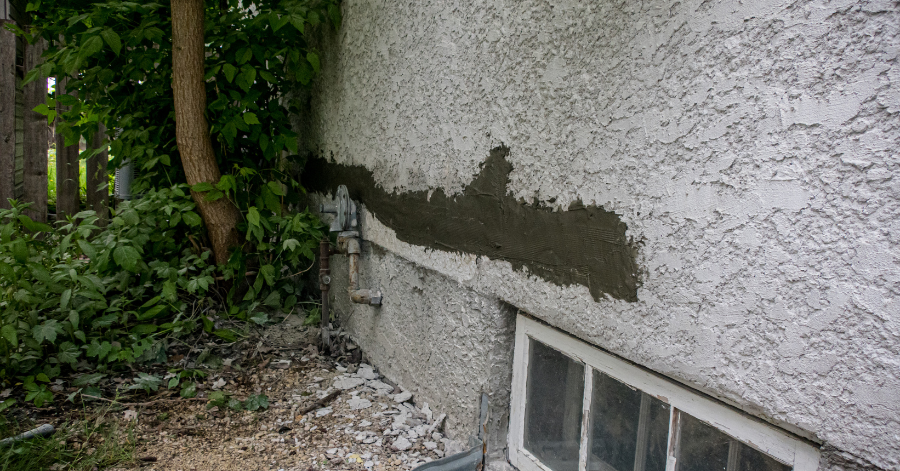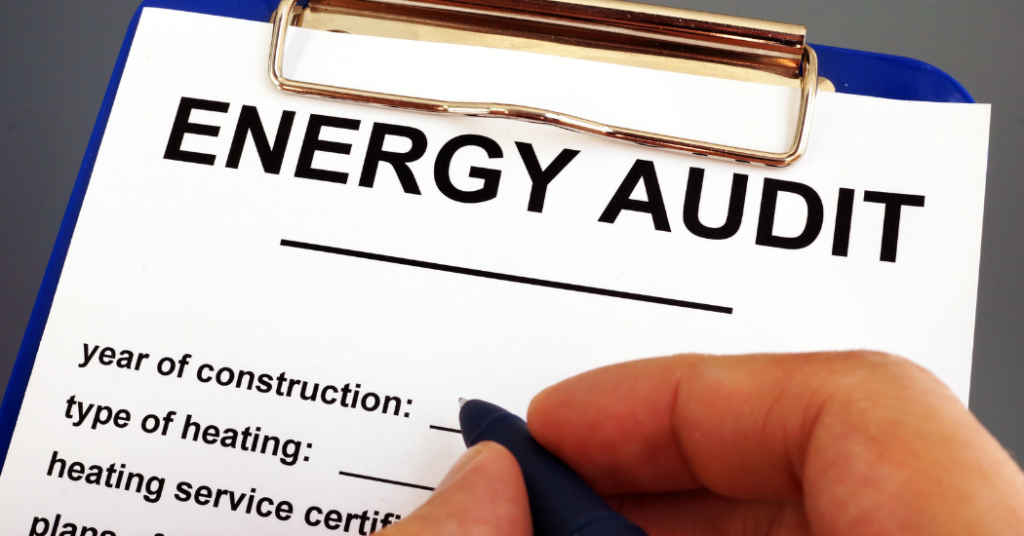How Can Stucco Cracks Affect Your Energy Bill During a Minnesota Winter?
That 1 Painter is the fastest-growing painting company in the world. Painting your space can be complicated, but with our expertise, we make the process easy and stress-free for homeowners. With franchises across the nation, we have helped tens of thousands of homeowners make the best choices for their homes without sacrificing quality, and we are here to show you how.
How Can Stucco Cracks Affect Your Energy Bill During a Minnesota Winter?
Minnesota winters are known for their freezing temperatures and long stretches of cold weather. As temperatures plunge, staying warm indoors becomes a priority for every homeowner. But here’s something that could be silently driving up your energy bill without you even realizing it—stucco cracks. These small imperfections in your home’s exterior can lead to increased energy costs, especially during the harsh winter months.
If you’ve noticed cracks in your stucco, it might not just be an aesthetic issue; it could be a significant factor affecting your home’s energy efficiency. In this article, we’ll explore how these cracks allow drafts to creep in, insulation to break down, and ultimately, how they cause your heating system to work overtime. Let’s dig deeper into how repairing stucco cracks can save you money and make your home more energy-efficient this winter.
Understanding Stucco Cracks and Their Impact on Energy Efficiency
What Causes Stucco Cracks?
Stucco is a durable material that has been a popular choice for exterior finishes in homes for decades, especially in places like Minnesota where the weather is harsh. However, like all materials, stucco can develop cracks over time. Understanding the causes behind stucco cracks is the first step in recognizing how they affect your energy bill.
- Temperature Fluctuations: Minnesota’s temperature swings—from freezing winters to occasional thaws—put a lot of stress on stucco. As the material contracts and expands, it can form small cracks.
- Foundation Settling: Over time, your home’s foundation may settle. Even slight shifts in the foundation can cause cracks in the stucco as the structure adjusts.
- Moisture Infiltration: Moisture from rain or snow can seep into the stucco and freeze in colder months. When water freezes, it expands, which worsens existing cracks and creates new ones.
- Age and Wear: As stucco ages, it naturally deteriorates. Small cracks may start appearing as the material weakens over time, especially in older homes.
How Cracks Affect Insulation and Energy Efficiency
Cracks in your stucco exterior don’t just ruin the curb appeal of your home; they also disrupt the insulation properties of your walls. The main role of stucco is to act as a barrier, keeping cold air out and warm air in. When cracks appear, this barrier is broken.
- Air Leaks: Even small cracks in the stucco can allow cold air to enter and warm air to escape. This creates unwanted drafts, making your home feel colder and less comfortable.
- Reduced Insulation Efficiency: Your home’s insulation relies on a sealed exterior to perform its job effectively. Cracks break the continuity of the insulation, allowing heat to escape more rapidly, causing your HVAC system to work harder to maintain the temperature.
- Increased Heat Loss: Cold drafts combined with gaps in insulation mean that your heating system will need to run longer and more often to compensate for the energy loss. This leads to higher energy consumption and an increase in your heating bill.

How Stucco Cracks Increase Your Heating Costs During Winter
Increased Drafts and Air Leaks
When your home’s exterior has cracks, even the smallest gaps can allow cold air to seep inside. During the winter, these drafts become more noticeable as they make their way through your walls, windows, and doors. While these drafts might seem insignificant, they lead to cold spots in your home. The more cracks you have, the more cold air enters—and that air needs to be heated. This is why your furnace or heating system runs longer cycles.
- Straining the HVAC System: With more cold air entering, your furnace needs to work overtime. It uses more energy to warm the indoor air and make your home comfortable again. This increase in usage shows up as a spike in your heating bill.
- Cold Spots and Uneven Heating: Stucco cracks lead to uneven heating in your home. Some rooms may be warmer than others, forcing you to adjust the thermostat more often. This constant fluctuation in temperature can contribute to higher energy usage.
Strain on Your HVAC System
If your heating system has to run longer to counteract the energy loss through stucco cracks, it will wear down more quickly. Over time, your system will become less efficient, requiring more energy to produce the same results.
- Frequent Maintenance Costs: A heating system that works harder than it needs to can suffer from wear and tear more quickly. This means you might have to repair or replace parts more frequently, adding additional costs on top of your already high energy bills.
- Increased Furnace Cycles: As your furnace operates for longer periods, it increases wear on the system, leading to reduced energy efficiency. The furnace will struggle to reach your desired indoor temperature, making it work harder and driving up costs.
The Hidden Risks of Ignoring Stucco Cracks in Winter
Risk of Further Damage
Stucco cracks aren’t just an inconvenience; they can lead to further damage if left unattended. When cracks allow moisture to infiltrate, it can weaken the structure of the wall underneath. Water can seep into the cracks and freeze during cold weather, causing the cracks to expand and spread.
- Structural Compromise: Over time, moisture and freezing can weaken the integrity of the walls. If not addressed, the damage can spread, leading to more extensive and expensive repairs.
- Worsening Insulation Efficiency: As moisture infiltrates through cracks, the insulation inside the walls can become damp. Damp insulation loses its effectiveness, causing even more heat loss and further increasing your heating costs.
Worsening Energy Efficiency Over Time
Small cracks in your stucco might not seem like a big deal, but they can quickly escalate. The longer you leave them untreated, the worse the situation becomes. Over time, these cracks can grow larger, and the damage to your home’s energy efficiency can increase significantly.
- More Drafts, More Loss: As cracks widen, more air can escape and enter your home, leading to a cycle of increasing energy loss and rising costs.
- Higher Future Repair Costs: If you wait too long to repair stucco cracks, the damage may spread to other parts of your home, requiring more extensive repairs. Fixing these problems early can save you a lot of money in the long run.

How to Identify Stucco Cracks and Measure Their Impact
Visual Inspection
The first step in addressing stucco cracks is to inspect your home’s exterior. Look for any visible damage, particularly around corners, windows, and doors. Even the smallest cracks can lead to energy loss, so it’s important to check the entire stucco surface.
- Look for Gaps: Use a flashlight to check for any gaps or cracks that might be hard to see in direct sunlight.
- Check for Moisture: Pay attention to signs of water damage, such as discoloration or mold near the cracks. This can indicate that moisture is infiltrating through and affecting the insulation behind the stucco.
Energy Audit
An energy audit can help you understand how much energy is being lost through stucco cracks. During an energy audit, professionals use specialized tools like infrared thermography to identify heat loss areas in your home.
- Thermal Imaging: This technology can reveal exactly where your home is losing heat, showing you how significant the cracks are and how much energy is being wasted.
- Professional Advice: An energy auditor can also recommend solutions for improving your home’s insulation and sealing any cracks or gaps in your stucco.
How to Fix Stucco Cracks and Prevent Energy Loss
DIY Stucco Repair
If the cracks in your stucco are small and manageable, you can fix them yourself. Here’s a quick guide:
- Clean the Area: Remove any dirt or loose debris around the crack.
- Apply Stucco Patch: For small cracks, use a stucco patching compound. Simply follow the instructions on the package, smoothing the compound into the crack until it is level with the surface.
- Seal Larger Gaps: For larger cracks, you may need a stronger sealant. Apply it with a caulking gun to ensure the gap is filled tightly.
Professional Stucco Repair
For larger or more widespread cracks, it’s best to call in the professionals. That 1 Painter Northern Minneapolis specializes in stucco repairs, ensuring that cracks are properly sealed and insulated.
- Inspection and Assessment: Our team will conduct a thorough inspection and assess the extent of the damage.
- Comprehensive Repairs: We provide high-quality, long-lasting repairs that address the root cause of the cracks and prevent further damage.
Improve Insulation Around the Stucco
After repairing the cracks, you might want to enhance the insulation around your stucco to prevent future energy loss.
- Add Extra Insulation: Spray foam insulation can be applied behind the stucco for added protection.
- Seal Gaps: Ensure all gaps around windows and doors are properly sealed to maintain consistent insulation throughout your home.
Don’t Let Stucco Cracks Drain Your Energy Bill
Stucco cracks can lead to significant energy loss, especially during the brutal Minnesota winter. But by repairing these cracks and improving your home’s insulation, you can reduce your heating costs, increase your home’s comfort, and protect it from further damage.
At That 1 Painter Northern Minneapolis, we specialize in high-quality stucco repair services that will help you stay warm and save money this winter. If you’ve noticed cracks in your stucco, don’t wait—call us today for a free consultation and start saving on your energy bills!